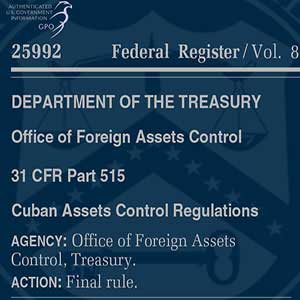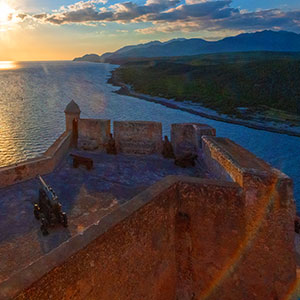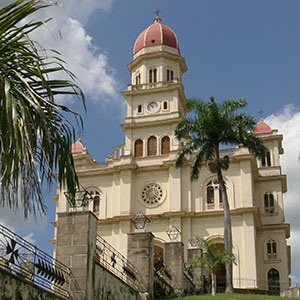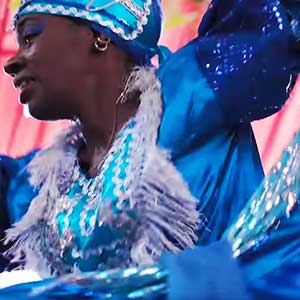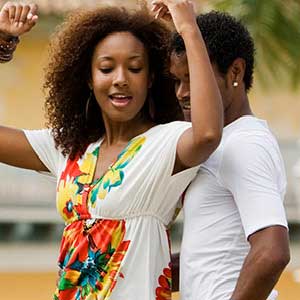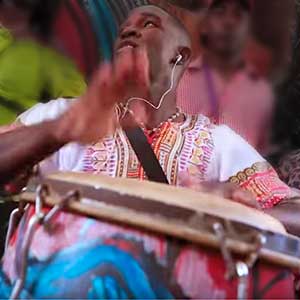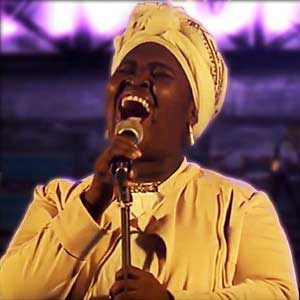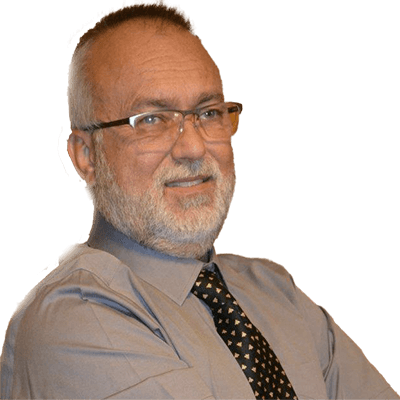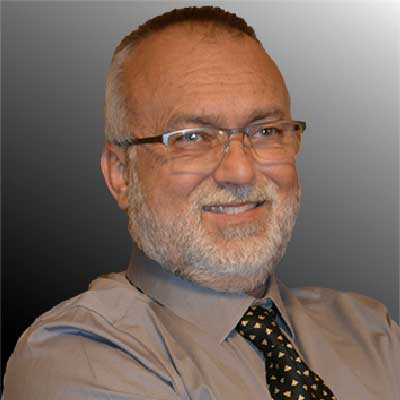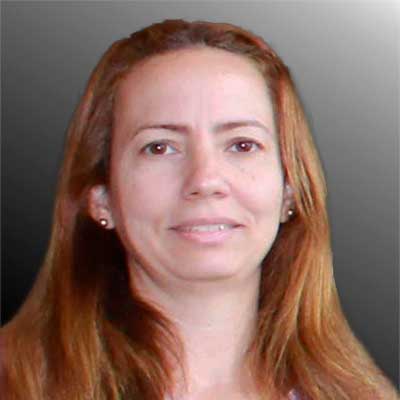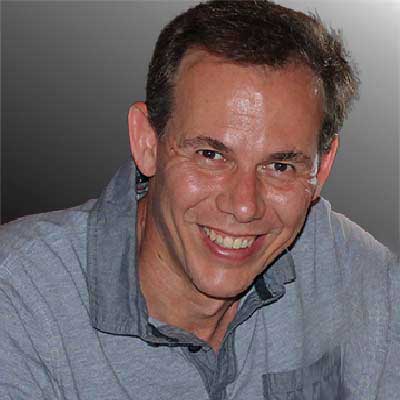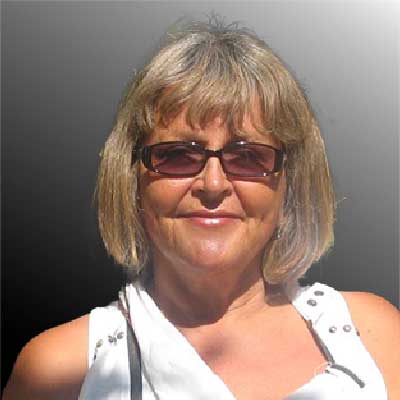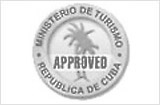Cuba Festival Travel: Fire Festival Cuba Tour 2026
Go to Cuba with Authentic Cuba Travel® for the Annual Caribbean Festival of Santiago de Cuba!
From July 2 to July 9, 2026
Explore Cuba's African and Caribbean Heritage! $2,799 (all taxes included)
Referral Discount: $100
And remember every person you invite will also receive a $100 discount!
Santiago de Cuba is the venue for the week-long 45th Edition of Festival del Caribe 2026 that showcases music and dance from across the Caribbean. Known to some as the Festival del Caribe (Caribbean Festival) and to others as the Festival del Fuego (Fire Festival), the event will take place from July 3 to July 9, 2026.
The festival acts as a venue for cultural exchange among the diverse traditions of the region, aiming to strengthen connections between various peoples and nations by highlighting common cultural elements. It features free outdoor concerts, indoor performances, parades of intricately decorated vehicles, lively dance processions, food stalls, beer stands, and goat-drawn cart rides for children. Notable among the street parades are:
- The Opening Parade of the Fire Festival (Festival del Fuego), also known as The Snake Parade. This event signifies the official commencement of the festival, showcasing both national and international bands and groups, starting from Plaza de Marte and Parque Céspedes. The parade begins with an invocation to Eleguá and Obatalá.
- The Fire Parade, which kicks off with a Congo ritual honoring Nzambi, the supreme entity in the Palo Monte religion. During this parade, the Mpaka, a divination receptacle in the Palo Monte tradition and a symbol of the Fire Festival, is presented to the country that will be the focus of the next festival.
- The Ceremony of the Burning of the Devil (La Quema del Diablo), a lively celebration filled with the rhythm of drums, held at the Alameda on Jesús Menéndez Avenue. This event serves as a farewell to the various groups and participants of the festival. A large effigy representing the Devil, symbolizing negativity, is set ablaze by the sea. This ritual is meant to clear the way for future gatherings and celebrations.
This Caribbean celebration was initially designed to be a serious occasion, and the festival's organizers continue to host various conferences, workshops, and discussion panels throughout the week. Some of these include:
- The International Colloquium "The Caribbean that Unites Us", which provides a platform for reflection and debate on issues related to the history and culture of Caribbean peoples.
- The presentation of the International Casa del Caribe Award, which honors individuals and institutions, both national and international, that have made significant contributions to the promotion, development, and research of traditional popular culture.
- Daily press conferences at the International Press Center held with invited figures from both Cuban and international cultural spheres attending the festival.
- The presentation of the Del Caribe Magazine, a publication produced by the Casa del Caribe, among others.
The Fiesta del Fuego (Fire Festival) begins in the morning, and goes on into the last hours of the night, providing participants with a number of stalls and temporary bars made of bamboo and palm fronds that line the main avenues of the city and the people of Santiago come out to party every night.
The aim of the Fiesta del Fuego (Fire Festival) is to highlight the cultural expressions of the region, which is well portrayed with the many parades and carnival held during the week. The Fiesta del Fuego (Fire Festival) is a very well-known street party, and is known to be celebrated by the majority of the streets
Authentic Cuba Travel® warmly invites US Educators, US Historians, US Scholars, US Sociologists, US Anthropologists and other US Citizens interested in Cuba's African and Caribbean Heritage to join this official Cuba tour to the Fire Festival From July 2 to July 9, 2026. Cuba from coast to coast! Two domestic flights included!
There are also lively processions with dancers and musicians and colourfully decorated floats that tour the city every evening. The Fire Festival takes place over 7 days in July each year.
The Fiesta del Fuego (Fire Festival) also features several traditional and popular music bands that constantly perform through the day. The event is also host to dancers and coaches who are part of the traditional Fire Fiesta procession. While these are the biggest draws of the fire festival, food stalls, children’s games and alcohol stands available during the Fiesta del Fuego (Fire Festival), make the event a grand entertainment festival.
""First of all, our trip to Cuba turned out to be one of the outstanding experiences of my life. It far exceeded my expectations. Initially, the main reason for going was the music, but as it turned out, seeing the culture, seeing the people, meeting the people, interacting with some of our fellow travelers and other attractions dominated."" Fred Friedman
Please, check the day-by-day below
GENERAL LICENSE FOR SUPPORT FOR THE CUBAN PEOPLE CUBA TRAVEL
US citizens or permanent residents genuinely interested in supporting the Cuban people can travel to Cuba from USA legally as part of this Cuba tour. Even though Cuba tourism is not possible for US citizens, this tour is a legal option to visit Cuba under the General License for the Support for the Cuban People.
CATEGORY: General License for Support for the Cuban People- 31 C.F.R. § 515.574(a) of the current Office of Foreign Assets Control (OFAC) regulations.
The travel-related transactions set forth in § 515.560(c) and other transactions that are intended to provide support for the Cuban people are authorized, provided that:
(1) The activities are of: (i) Recognized human rights organizations; (ii) Independent organizations designed to promote a rapid, peaceful transition to democracy; or (iii) Individuals and nongovernmental organizations that promote independent activity intended to strengthen civil society in Cuba; and
2) Each traveler engages in a full-time schedule of activities that: (i) Enhance contact with the Cuban people, support civil society in Cuba, or promote the Cuban people’s independence from Cuban authorities; and (ii) Result in meaningful interaction with individuals in Cuba.
Each person relying on the general authorization in this paragraph must retain specific records related to the authorized travel transactions. See §§ 501.601 and 501.602 of this chapter for applicable recordkeeping and reporting requirements.
We provide our US travelers with all the required documentation to ensure they are in compliance with 2025 Trump administration’s rules on Cuba travel under the US Cuba Travel category: Support for the Cuban People. US travelers can choose to depart to Cuba from any US port of their choosing.
GENERAL LICENSE FOR PROFESSIONAL RESEARCH CUBA TRAVEL
US Educators, US Historians, US Scholars, US Sociologists, US Anthropologists and other African Heritage Professionals from USA interested in conducting professional research on Cuba's African and Caribbean Heritage can travel to Cuba under the provisions of the General License for Professional Research.
CATEGORY: General license for Professional Research- 31 C.F.R. § 515.564(a)(1)(2) of the current Office of Foreign Assets Control (OFAC) regulations.
(1) Professional research. The travel-related transactions set forth in § 515.560(c) and such additional transactions as are directly incident to professional research are authorized, provided that:
(i) The purpose of the research directly relates to the traveler's profession, professional background, or area of expertise, including area of graduate-level full-time study; and
(ii) The traveler's schedule of activities does not include free time or recreation in excess of that consistent with a full-time schedule of professional research.
(2) Professional meetings. The travel-related transactions set forth in § 515.560(c) and such additional transactions as are directly incident to attendance at, or organization of, professional meetings or conferences in Cuba are authorized, provided that:
(i) For a traveler attending a professional meeting or conference, the purpose of the meeting or conference directly relates to the traveler's profession, professional background, or area of expertise, including area of graduate-level full-time study;
(ii) For a traveler organizing a professional meeting or conference on behalf of an entity, either the traveler's profession must be related to the organization of professional meetings or conferences or the traveler must be an employee or contractor of an entity that is organizing the professional meeting or conference; and
(iii) The traveler's schedule of activities does not include free time or recreation in excess of that consistent with a full-time schedule of attendance at, or organization of, professional meetings or conferences.
We provide our US travelers with all the required documentation to ensure they are in compliance with 2025 Trump administration’s rules on Cuba travel under the US Cuba Travel category: Professional Research and Professional Meetings. US travelers can choose to depart to Cuba from any US port of their choosing.
Cuba Engage Tours
Notice to US African Heritage Studies Associations, US Museums of African American History, US African American Museums of the Arts, US Afro-American Historical and Cultural Society Museums, US Black Archives Research Centers, Black History Museum, US Centers for African American Culture, and other Organizations from USA:
US African Heritage Studies Associations, US Museums of African American History, US African American Museums of the Arts, US Afro-American Historical and Cultural Society Museums, US Black Archives Research Centers, Black History Museum, US Centers for African American Culture, and other Academic Organizations from USA can organize a trip to Cuba under the provisions of the General License for Educational Activities, the General License for Support for the Cuban People, the General License for Group People-to-people Educational Travel and other Academic Educational Activities, the General License for Professional Research, the General License for Semi-Professional & Amateur International Sports Competition, the General License for Humanitarian Projects, the General License for Activities of Private Foundations or Research or Educational Institutes among others. Certain conditions are to be met to comply with OFAC General License requirements for each category of USA Cuba travel though.
The mission of your organization and the objective of your trip to Cuba determine under what general license you can travel to Cuba legally. In general, most trips should consist of a full-time schedule of activities intended to promote the exchange with the ordinary citizens of Cuba. This full-time schedule must also include educational activities that result in meaningful interaction in between U.S and Cuban nationals. Free time in excess or regular tourists' activities are not permitted.
We take care of all details both in North America and in Cuba, including VISA and flight arrangements to Cuba's main destinations via USA ports (Miami, Tampa, Fort Lauderdale, Houston, New York, Los Angeles, and others) or through third countries like Canada and Mexico. Authorized US organizations can travel through a third country subject to the same restrictions and requirements as those flying directly from USA.
At Authentic Cuba Travel®, we have been organizing such educational and cultural travel experiences from the United States of America for years with great success.
Notice to US Universities, Colleges and Schools with African-American Studies Departments and Programs:
In January 2016, the US Government announced further enhancements to the 12 categories of authorized travel to Cuba that previously required a specific license (this is, lengthy applications to OFAC). Now travel to the Caribbean island is allowed under a general license (this is, self-completed paperwork with no application to OFAC needed).
After President Trump's policy change on USA Cuba travel on February 6, 2025, and July 14, 2025, the General License for Educational Activities remains in place. Accredited U.S. graduate or under graduate degree-granting institutions; U.S. Academic Institutions; and U.S. Schools can organize and sponsor an educational trip to Cuba for their students, faculty and staff under the General License for Educational Activities, provided that the trip meets OFAC guidelines; and that an employee or other representative of the organization escorts the trip to make sure such guidelines are followed by all participants.
US Schools of Cinematic Arts, Theatre & Television, US Film & Cinematographic Institutes, US Film Conservatories, US Schools of Motion Pictures & Television, US College of Films & Media Arts, US Centers for Film Studies, and other Educational Institutions for Cinematic Arts, Theatre and Television from USA can organize and sponsor a trip to Cuba for educational activities. The purpose of the Cuba travel should be for:
_ the participation in a structured educational program offered for credit as part of a course of the sponsoring institution;
_ educational exchanges sponsored by Cuban or U.S. secondary schools involving secondary school students’ participation in a formal course of study or in a structured educational program offered by a secondary school or other academic institution, and led by a teacher or other secondary school official are authorized. This authorization allows for participation of a reasonable number of adult chaperones to accompany the secondary school students to Cuba.
_ attendance at non-commercial academic seminars, conferences and workshops related to Cuba sponsored or co-sponsored by U.S. academic institution.
_ non- commercial academic research related to Cuba for the purpose of obtaining a graduate or undergraduate degree;
_ the participation in a formal course of study at a Cuban academic institution provided that credits will be accepted toward the student’s graduate or undergraduate degree.
We take care of all details both in North America and in Cuba, including VISA and flight arrangements to Cuba's main destinations via USA ports (Miami, Tampa, Fort Lauderdale, Houston, New York, Los Angeles, and others) or through third countries like Canada and Mexico. Authorized US organizations can travel through a third country subject to the same restrictions and requirements as those flying directly from USA.
At Authentic Cuba Travel®, we have been organizing such educational and cultural travel experiences from the United States of America for years with great success.
Want to Take Your Students to Cuba?
Authentic Cuba Travel® operates courses, programs and exchanges sponsored by Cuba’s top educational schools and organizations such as the University of Havana, Cuba's National Ballet School, Cuba's Sports Ministry, San Alejandro’s Arts School, Insituto Cubano de La Musica, Conjunto Folklórico Nacional de Cuba. Request custom-made no-obligation Cuba Study Tours® for your students and check all the resources we put at your service. Do not wait any longer. Now is the time to start planning the next Cuba tour for your students.
Cuba Study Trips
-
Cuba Business Tours & Travel
Explore Cuba's Economy and Private Business Sector
-
Cuba Healthcare Tours & Travel
Professional Research Cuba's Medical System & Healthcare Model
-
Cuba Cultural Tours & Travel
Discover the Wonders of Cuba’s UNESCO World Heritage Sites
-
Cuba Nature Tours & Travel
Visit UNESCO Biosphere Reserves, National Parks & Protected Areas
-
Cuba Architecture Tours & Travel
Explore America’s largest & best preserved Spanish Historical Cities
-
Cuba Catholic Tours & Travel
Exchange with Cubans at Cathedrals, Churches & Social Projects
Cuba School Programs
-
Spanish Immersion Course
Spanish Course sponsored by the University of Havana
-
Ballet Training Course
Ballet Course sponsored by Cuba's National Ballet School
-
Sports Training Exchange
Sports Trainning sponsored by Cuba's Sports Ministry
-
Arts Educational Program
Arts Program sponsored by San Alejandro’s Arts School
-
Jazz Performance
Sponsored by the Havana Jazz Festival’s Organizing Committee
-
Dance Workshops
Sponsored by Conjunto Folklórico Nacional de Cuba
Cuba Education Tours
Cuba Real Tours
Cuba Fire Festival
Cuba has captivated the world with its soulful music and culture. One can taste its enigmatic artistry through the annual Fire Festival or Festival del Fuego celebrated in its most Caribbean city, Santiago de Cuba. Fiesta el Fuego (Fire Festival), also known as the Caribbean Festival, has become a world-famous event and a venue for preserving the culture of the Caribbean region, for strengthening the relationships among the Caribbean countries, and for reminiscing the African origin of various countries. This lively celebration is literally firing up the streets of Santiago de Cuba. It is a week-long feast of music, dance, color and life. Traditional singing and dancing are performed by famous bands and groups which ignite the passion of the Cuban people for stimulating rhythm of salsa, rumba, calypso and reggae, to name a few. The highlight of this Fire Festival (Festival del Fuego) is the culminating parade of countries, united in the same goals.
What's Included?
- Support for the Cuban People General License Documentation (for USA Travelers).
- Full-Time Schedule of Support for the Cuban People Activities.
- 7 Nights at 4-Star Casagranda Hotel or Luxury Casa Particular.
- 11 Meals Included at Cuba’s finest privately-owned restaurants: 7 Breakfasts & 4 Lunches.
- Unlimited Access to Venues of the Santiago de Cuba Fire Festival, 2025.
- Enjoy over 50 Musical Venues around the Fire Festival.
- Luxury 24/7 Dedicated Air-conditioned Motor Coach and Driver.
- An Expert Cuban English Speaking Guide and Translator.
- Support from Authentic Cuba Travel®' Staff in Cuba and Canada.
- Travel to “the Capital of the Caribbean”, Santiago de Cuba.
- Ferry Boat Ride to Cayo Granma (Granma Island) in the Caribbean Sea.
- Travel to Guantanamo where the US Guantanamo Bay Detention Camp and Military Base is located.
- Guided Tour of Santiago de Cuba's Historical Site.
- Guided Tour of UNESCO World Heritage Site, San Pedro Morro Castle.
- Guided Tour of Santa Ifigenia Cemetery, established in 1868.
- Visit to Basilica de Nuestra Senora del Cobre.
- Exchange with independent community project, Suenos y Fantasia.
- Exchange with nongovernmental organization El Cobre Youth Steel Band.
- Exchange with non-governmental organization Promociones Literarias Claustrofobias.
- Exchange with religious community project, Tumba Francesa Society.
- Attendance to the Homenaje al Cimarron (Homage to the Runaway Slave) in recognition of slave rebellion.
- Tumba Francesa performance by the Santa Catalina de Ricci Pompadour Society, declared a UNESCO Masterpiece of the Oral and Intangible Heritage of Humanity
- Visit to privately-owned Art Gallery of Alberto Lescay.
- Visit to privately-owned antique bookstore, Libreria Escalera de Edy.
Expert’s Corner
Hello! I’m Bernt Dietmar. Over 20 years ago, I visited Cuba as part of a delegation of American scientists interested in exploring opportunities for research and business collaboration. I was surprised by Cuba’s high academic standards, and the methods used in the educational system. We founded Authentic Cuba Travel® to show that Cuba is more than another Caribbean tourism destination and promote the understanding in between Cuba and North America. I kindly invite you to join us. We'll explore UNESCO World Heritage Sites, exchange with Cubans, partake in local food dishes, music, rum, and much more!
Cuban Festivals
Every year Cuba’s International Festivals brought travellers to Cuba from all over the world. Every year Authentic Cuba Travel® makes sure that those attending international events such as the Havana Jazz Festival, the Havana Book Fair, the Havana Film Festival, the Havana Art Biennial, the Fire Festival, the Havana Ballet Festival or the Habano Cigar Festival get the most out of their Cuba travel experience and get to know the authentic Cuba.
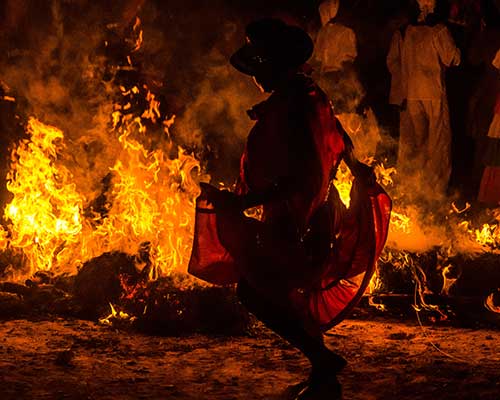
Cuba Fire Festival
Organized by Casa del Caribe, the annual Cuba Fire Festival will take place in Santiago de Cuba from July 2, 2026 to July 9, 2026. With musical venues at 50 locations and city streets lined with bars and stalls, rum-fuelled revellers get in the festival spirit as live bands, musicians and DJs keep crowds at fever pitch well into the nighttime hours.
Book NowCuba Fire Festival
Organized by Casa del Caribe, the annual Cuba Fire Festival will take place in Santiago de Cuba from July 2, 2026 to July 9, 2026. With musical venues at 50 locations and city streets lined with bars and stalls, rum-fuelled revellers get in the festival spirit as live bands, musicians and DJs keep crowds at fever pitch well into the nighttime hours.
Book Now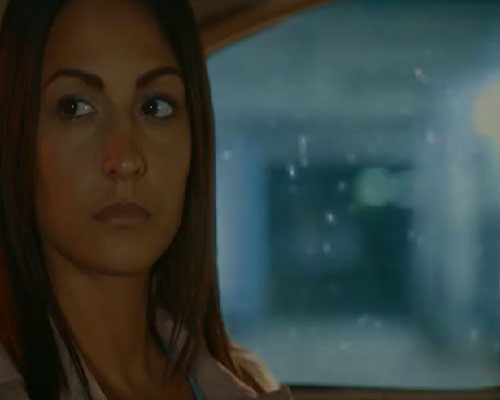
Havana Film Festival
The Havana Film Festival promotes the cinematographic works of Spanish- language filmmakers from Latin America, Spain and Cuba. It is sponsored by the Cuban Institute of the Cinematographic Art and Industry, ICAIC. The 46th edition of the Festival International del Nuevo Cine Latinoamericano will take place from December 4, 2025 to December 14, 2025.
Book NowHavana Film Festival
The Havana Film Festival promotes the cinematographic works of Spanish- language filmmakers from Latin America, Spain and Cuba. It is sponsored by the Cuban Institute of the Cinematographic Art and Industry, ICAIC. The 46th edition of the Festival International del Nuevo Cine Latinoamericano will take place from December 4, 2025 to December 14, 2025.
Book Now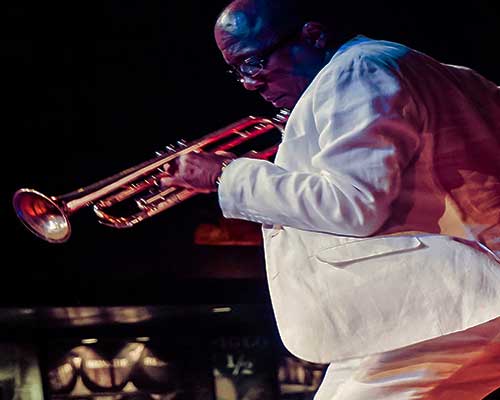
Havana Jazz Festival
The 41st International Jazz Festival of Havana, which is sponsored by famed Cuban jazz artist Chucho Valdes and ICM, or the Cuban Institute of Music, will be held in numerous locations throughout La Habana from January 25, 2026 to February 1, 2026. More than 100 international bands have joined Cuba’s top Jazz musicians in previous festivals.
Book NowHavana Jazz Festival
The 41st International Jazz Festival of Havana, which is sponsored by famed Cuban jazz artist Chucho Valdes and ICM, or the Cuban Institute of Music, will be held in numerous locations throughout La Habana from January 25, 2026 to February 1, 2026. More than 100 international bands have joined Cuba’s top Jazz musicians in previous festivals.
Book Now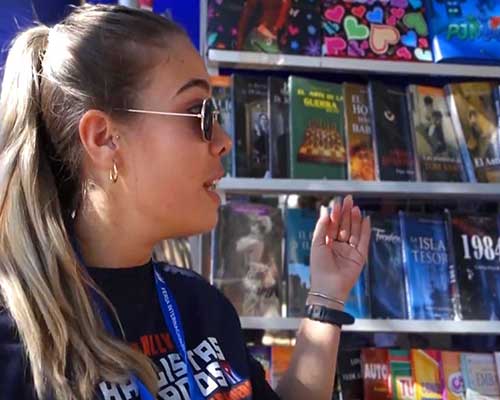
Havana Book Fair
The 34th International Book Fair of Havana will take place in Havana City from February 12 to February 22, 2026. Along with the public, the book fair is attended by Cuban and international authors, publishers, and political officials. Organized by the Cuban Book Institute, the fair transforms the Spanish fortification La Cabana into one of the biggest book parties in the world.
Book NowHavana Book Fair
The 34th International Book Fair of Havana will take place in Havana City from February 12 to February 22, 2026. Along with the public, the book fair is attended by Cuban and international authors, publishers, and political officials. Organized by the Cuban Book Institute, the fair transforms the Spanish fortification La Cabana into one of the biggest book parties in the world.
Book Now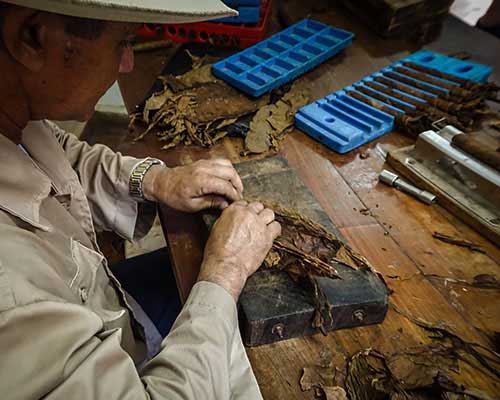
Habano Cigar Festival
Considered by many to be the world’s biggest premium cigar celebration, the XXVI Cigar Festival of Cuba will take place from February 23 to February 27, 2026. The Habano Cigar Festival's Exhibit Fair at Palacio de Las Convenciones regularly attracts some 1500 producers, distributors and businessmen, as well as large numbers of Cigar aficionados and tourists.
Book NowHabano Cigar Festival
Considered by many to be the world’s biggest premium cigar celebration, the XXVI Cigar Festival of Cuba will take place from February 23 to February 27, 2026. The Habano Cigar Festival's Exhibit Fair at Palacio de Las Convenciones regularly attracts some 1500 producers, distributors and businessmen, as well as large numbers of Cigar aficionados and tourists.
Book Now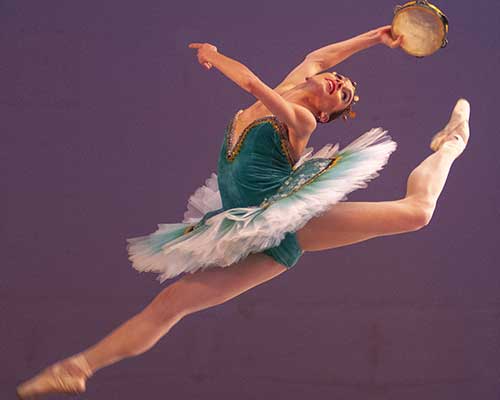
Havana Ballet Festival
The 29th Anniversary of the International Ballet Festival of Havana Alicia Alonso will take place from October 28 to November 6, 2026. Dancers, ballet companies, and choreographers from across the world look forward to the event, which is hosted by Cuba’s National Ballet at the Great Theatre of Havana, the Karl Marx Theatre and the Mella Theatre.
Book NowHavana Ballet Festival
The 29th Anniversary of the International Ballet Festival of Havana Alicia Alonso will take place from October 28 to November 6, 2026. Dancers, ballet companies, and choreographers from across the world look forward to the event, which is hosted by Cuba’s National Ballet at the Great Theatre of Havana, the Karl Marx Theatre and the Mella Theatre.
Book Now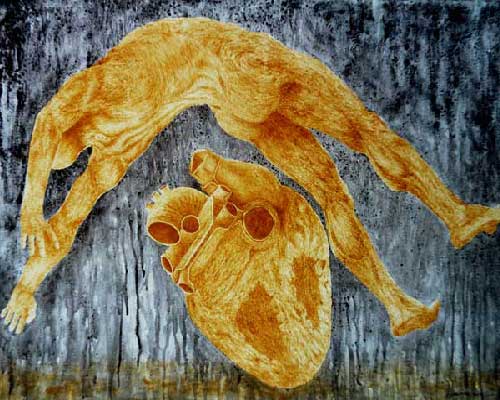
Havana Art Biennial
The 16th Havana Art Biennial will take place from November 15, 2027 to February 28, 2028. The rooster of international and national visual artists will include more than 200 creators from about 20 countries. According to the Wifredo Lam Art Center (organizing institution), the festival will turn the city into an interactive cultural corridor between the creators and public.
Book NowHavana Art Biennial
The 16th Havana Art Biennial will take place from November 15, 2027 to February 28, 2028. The rooster of international and national visual artists will include more than 200 creators from about 20 countries. According to the Wifredo Lam Art Center (organizing institution), the festival will turn the city into an interactive cultural corridor between the creators and public.
Book Now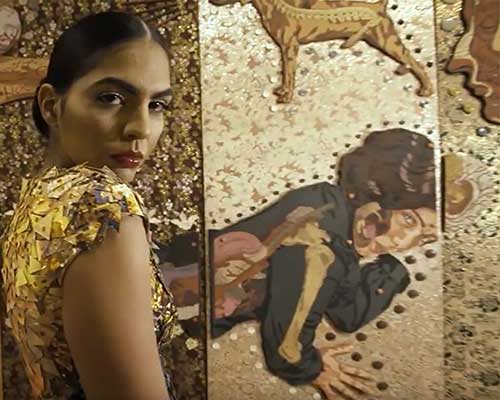
Art & Fashion Festival
The 22nd Edition of the Arte y Moda Festival will take place in the Cuban capital from November 6 to 8, 2026. The event showcases the creativity and innovation of Cuban designers, particularly their emphasis on sustainability through the use of natural and recycled materials. They utilize innovative textiles, focusing on experimental and forward looking fashion.
Book NowArt & Fashion Festival
The 22nd Edition of the Arte y Moda Festival will take place in the Cuban capital from November 6 to 8, 2026. The event showcases the creativity and innovation of Cuban designers, particularly their emphasis on sustainability through the use of natural and recycled materials. They utilize innovative textiles, focusing on experimental and forward looking fashion.
Book Now







CUBA TOUR FINDER
Select your authentic Cuba trip from over 70 Cuba tours in seconds. Sort by departure date, price, destination and even Cuba travel theme.
QUICK CUBA TOUR FINDERCuba Tour Itinerary
-
Day 1. Thursday 2 July 2026. Hello Santiago de Cuba! 
Arrival at Santiago de Cuba International Airport. Santiago de Cuba, often referred to as the Capital of the Caribbean, is a destination that attracts visitors year-round. However, July is particularly special due to the annual Caribbean Festival (Festival del Caribe).
Upon arrival, your group will be greeted by your Authentic Cuba Travel® guide. You will then enjoy a scenic transfer to your 4-Star Casa Granda Hotel, conveniently situated in the heart of Santiago de Cuba's Historical Center, overlooking Parque Céspedes, or to your Luxury Casa Particular.
Under the Obama and Trump administrations, the Cuban government notably relaxed restrictions on Cubans renting out rooms in their homes to foreign visitors. This led to a surge in Casas Particulares (private rental accommodations run by Cuban families or individuals) across the island. Today, many of these modest establishments have transformed into upscale boutique hotels, providing high-quality amenities, food and beverage services, wireless internet access, and exceptional customer care.
Founded in 1514, Santiago de Cuba is the second-largest city in Cuba and one of the first seven settlements established by Spanish conquistador Diego Velázquez in the early 16th century. It served as the first capital of the country during colonial times. Its advantageous location by Santiago de Cuba Bay, which opens to the Caribbean Sea, made it a key departure point for Spanish explorations of Mexico and Florida, led by Juan de Grijalba and Hernán Cortés in 1518 and 1538, respectively.
Known for its rich cultural heritage, Santiago de Cuba has played a significant role in various historical events throughout the Caribbean. For instance, during the Haitian Revolution of 1791, many French and British immigrants fleeing the turmoil settled in the city, further enriching its Spanish and African cultural tapestry.
In the evening, you will participate in the Opening Parade of the Fire Festival (Festival del Fuego), known as The Snake Parade. This event marks the official start of the festival, featuring both national and international bands and groups, beginning at Plaza de Marte and Parque Céspedes. The parade commences with an invocation to Eleguá and Obatalá.
Afterward, you can enjoy various musical performances throughout the historical center as part of the Fire Festival, also known as the Caribbean Festival of Santiago de Cuba. With over 50 venues hosting activities, many set in beautiful outdoor locations, the Fiesta del Fuego is one of the largest and most vibrant street parties in Cuba, transforming the streets of Santiago de Cuba into a lively celebration of color, music, and dance.
4-Star Hotel Casa Granda
Address: Heredia No. 201, Esquina San Pedro. Santiago de Cuba, Cuba.
Postal Code: 90400.
Telephone: (+53 22) 653021-25
Private group check-in.
Breakfast is complimentary daily from 7:00 a.m. to 10:00 a.m. -
Day 2. Friday 3 July 2026. Santiago de Cuba Morning: today we visit to San Pedro de la Roca Morro Castle, a XVII century military construction atop the cliffs at the narrow entrance to Santiago Bay and one of the settings of the Spanish American War. The fortress was declared a World Heritage Site by UNESCO in 1997, cited as the best preserved and most complete example of Spanish-American military architecture.
Throughout the day, we will also participate in various activities related to the Caribbean Festival. Your tour guide will present the day's schedule of events, and we will attend the most popular activities, time permitting. Among the most popular daily activities, we can highlight the following:
The International Colloquium The Caribbean that Unites Us. A space for reflection and debate on topics related to the history and culture of the Caribbean peoples.
The Presentation of the International Casa del Caribe Award. This award recognizes the work of national and foreign personalities and institutions that have excelled in promoting, developing, and researching traditional popular culture.
Visit the Art Exhibits at the Caribbean Hall. A collective exhibition of visual artists at the Oriente Gallery.
Visit the International Press Center. A space where press conferences are scheduled with invited personalities from Cuban and foreign culture attending the Festival.
Presentation of the Del Caribe Magazine. A publication from the Casa del Caribe.
Lunch at Paladar El Pirata, serving delicious local seafood dishes and boasting nice views of Santiago de Cuba bay and Sierra Maestra Mountains. Patronizing private family-run restaurants directly supports the Cuban people and the Cuban families financially while encouraging independent entrepreneurial activities that in turn strengthen civil society in Cuba.
Afternoon: then we will drive through the former bourgeois neighborhood of Vista Alegre for a visit to the Rene Valdes Art Gallery. This art space was established by the Caguayo Foundation, a cultural institution founded by world renowned local artist Alberto Lescay to promote monumental works of art.
Next we will pay a visit to Santiago’s Casa de la Ceramica where Santiaguero ceramic artists work using a range of techniques from raku, painted, to enameled work. Exchange with artists and staff members. Supporting the work of independent Cuban nongovernmental organizations, community projects and independent artists that promote independent business activity in Cuba by patronizing their private entrepreneurial activities is the main intend of our itinerary.
Panoramic bus ride of modern Santiago de Cuba. We will visit the Heredia Theatre, San Juan Hill, Square of Revolution Antonio Maceo, baseball stadium Saturnino Lora, Palacio de Justicia, among others.
This evening we will partake in The Fire Parade. It begins with a Congo ritual in honor of Nzambi, the supreme entity among practitioners of the Palo Monte religion. The Mpaka, a receptacle used for divination in the Palo Monte tradition and an emblem of the Fire Festival, is presented to the country to which the next Festival will be dedicated.
Afterward, you can enjoy various musical performances throughout the historical center as part of the Fire Festival, also known as the Caribbean Festival of Santiago de Cuba. With over 50 venues hosting activities, many set in beautiful outdoor locations, the Fiesta del Fuego is one of the largest and most vibrant street parties in Cuba, transforming the streets of Santiago de Cuba into a lively celebration of color, music, and dance. -
Day 3. Saturday 4 July 2026. Santiago de Cuba Morning: participation in the Homenaje al Cimarron (Homage to the Runaway Slave). This event takes place in the town of El Cobre in recognition of slave rebellion. This tribute to slave rebellion, and indeed to human freedom, is held at each edition of the Fire Festival in one of the towns where the slaves first rose up in America, making it one of the most emblematic sites in Santiago de Cuba. It also pays homage to the culture left by the fugitive slaves in their struggle for emancipation, through the reproduction of their rituals, songs, rhythms, and dances.
During our support for the Cuban people trip to Cuba, we will engage in authorized support for the Cuban people activities at El Cobre Town, the headquarters of El Cobre Youth Steel Band. The community work of the band includes the betterment of El Cobre town and its locals. Under the direction of musician, Hermes Ramirez, a children’s steel band have been founded to preserve the musical and social work of the band for future generations. Performing for the Pope Benedict XVI during his visit to the Sanctuary of Our Lady of Charity.
This support for the Cuban people activity will result in a meaningful interaction with the people of El Cobre town. We will present donations of educational & humanitarian items and ask how we can help promoting their message of peace in the USA.
Followed by a visit to Basilica de Nuestra Senora del Cobre. This is the country’s most sacred pilgrimage site since the Virgin of Charity is the patron saint of Cuba. In the Afro-Cuban religion she is associated with Ochun, the Yoruba goddess of love.
Lunch at Paladar Aurora. Paladar is a Spanish word that refers to private independent restaurants run by Cuban restaurateurs (self-employers). Cuban entrepreneurs are showing an emerging confidence and a newfound responsibility to take control of their futures after Raul Castro's economic reform programme. We will engage in a conversation with Cuban owners and staff to learn more about the booming independent Cuban hospitality industry. Eating in privately-owned restaurants directly supports the Cuban people and their families.
Afternoon: visit to Parque Cespedes, located at the heart of the historical center of the city. The Plaza is surrounded by important buildings such as:
The Cathedral, originally built in 1522 and where the remains of Diego Velasquez are buried.
Ayuntamiento (City Hall) erected in 1950’s. From the balcony of this building Fidel Castro gave his victory speech immediately after the success of the Revolution on January 1rst, 1959.
Visit the oldest house in Cuba, today Museo de Ambiente Historico Colonial and formerly the residence of Diego Velázquez in the XVI century.
Next we will pay a visit to Santiago de Cuba’s antique bookstore, Libreria Escalera de Edy, a privately-owned Cuban rare and old book store that also carries vinyl records, posters and other memorabilia. The book store serves also as a book exchange and cultural center for the neighbours. Run by self-employed Cubans (cuentapropistas) Edy Ferrer and Conrado Ferrer, here we can shop for some rare Cuban books, postcards and posters). Shopping in these sorts of stores directly supports the Cuban staff and their families while encouraging independent entrepreneurial activities that in turn strengthen civil society in Cuba.
Evening: you can enjoy various musical performances throughout the historical center as part of the Fire Festival, also known as the Caribbean Festival of Santiago de Cuba. With over 50 venues hosting activities, many set in beautiful outdoor locations, the Fiesta del Fuego is one of the largest and most vibrant street parties in Cuba, transforming the streets of Santiago de Cuba into a lively celebration of color, music, and dance. With plenty of vendors selling the national drink, rum-fuelled revellers get in the festival spirit as live bands, musicians and DJs keep crowds at fever pitch. The whole city seemingly takes parts with celebrations continuing through until the small hours. -
Day 4. Sunday 5 July 2026. Santiago de Cuba Morning: ferry boat ride to Cayo Granma, a picturesque little island of red-roofed dwellings just inside the Bay of Santiago de Cuba.
Next we will visit the community art project, Suenos y Fantasia (Dreams and Fantasies) carried out by local children who use their imagination to create toys and crafts from recycled materials collected from the seashores. During this visit we will engage with the Cubans to learn more about the role of this Cuban independent organization. This Support for the Cuban People activity will result in a meaningful interaction with the people of Cayo Granma. We will present donations of educational & humanitarian items.
Optional lunch: with the help of your Authentic Cuba Travel® guide assisting with individual bookings, dinner time serves as a good opportunity to try a new paladar (family-run privately-owned restaurant), a business model that has flourished in the city in the past years since the Cuban government opened the door to private enterprise.
Throughout the day, we will also participate in various activities related to the Caribbean Festival. Your tour guide will present the day's schedule of events, and we will attend the most popular activities, time permitting. Among the most popular daily activities, we can highlight the following:
The International Colloquium The Caribbean that Unites Us. A space for reflection and debate on topics related to the history and culture of the Caribbean peoples.
The Presentation of the International Casa del Caribe Award. This award recognizes the work of national and foreign personalities and institutions that have excelled in promoting, developing, and researching traditional popular culture.
Visit the Art Exhibits at the Caribbean Hall. A collective exhibition of visual artists at the Oriente Gallery.
Visit the International Press Center. A space where press conferences are scheduled with invited personalities from Cuban and foreign culture attending the Festival.
Presentation of the Del Caribe Magazine. A publication from the Casa del Caribe.
Evening: you can enjoy various musical performances throughout the historical center as part of the Fire Festival, also known as the Caribbean Festival of Santiago de Cuba. With over 50 venues hosting activities, many set in beautiful outdoor locations, the Fiesta del Fuego is one of the largest and most vibrant street parties in Cuba, transforming the streets of Santiago de Cuba into a lively celebration of color, music, and dance. With plenty of vendors selling the national drink, rum-fuelled revellers get in the festival spirit as live bands, musicians and DJs keep crowds at fever pitch. The whole city seemingly takes parts with celebrations continuing through until the small hours. -
Day 5. Monday 6 July 2026. Santiago de Cuba Morning: as part of our full-time schedule of support for the Cuban people activities, we will attend a Tumba Francesa performance by the Society of Tumba Francesa "La Caridad de Oriente ", declared a Masterpiece of the Oral and Intangible Heritage of Humanity by UNESCO.
It conserves in all its splendor the contributions bequeathed by the French and dahomeyana- Benin, Congo and Niger cultures, in the island of Cuba; as genuine example of the tradition and expression of the popular culture of the Cuban east.
Afternoon and evening: participation in the different musical venues taking place in the historical center around the THE FIRE FESTIVAL 2026. There are over 50 locations holding activities during the fire festival, many of them in natural open settings.
Your guide will give you options the days before so that you plan ahead this day or just play as it goes! -
Day 6. Tuesday 7 July 2026. Santiago de Cuba Morning: throughout the morning, we will participate in various activities related to the Caribbean Festival. Your tour guide will present the day's schedule of events, and we will attend the most popular activities, time permitting. Among the most popular daily activities, we can highlight the following:
The International Colloquium The Caribbean that Unites Us. A space for reflection and debate on topics related to the history and culture of the Caribbean peoples.
The Presentation of the International Casa del Caribe Award. This award recognizes the work of national and foreign personalities and institutions that have excelled in promoting, developing, and researching traditional popular culture.
Visit the Art Exhibits at the Caribbean Hall. A collective exhibition of visual artists at the Oriente Gallery.
Visit the International Press Center. A space where press conferences are scheduled with invited personalities from Cuban and foreign culture attending the Festival.
Presentation of the Del Caribe Magazine. A publication from the Casa del Caribe.
Today, we will enjoy lunch at a private restaurant, Paladar St. Pauli. Located in a beautifully restored historical house, this chic eatery is vibrant with life, rich aromas, and exquisite flavors. It has transformed the culinary landscape in Santiago de Cuba, offering unique dishes like gazpacho that are hard to find elsewhere in the city. This presents a special opportunity for American visitors to engage directly with local entrepreneurs. Dining in privately-owned establishments not only enhances your experience but also provides essential support to the Cuban people and their families.
Afternoon: as part of our Support for the Cuban People initiative in Santiago de Cuba, we will participate in authorized activities, including a visit to the internationally recognized Cuban non-governmental organization, Promociones Literarias Claustrofobias. Founded in 2012 by Cuban entrepreneurs Naskicet Domínguez and Yunier Riquenes, this independent digital publishing house and cultural project aims to promote contemporary Cuban authors beyond national borders.
Claustrofobias is deeply involved in community outreach, including the Menique Children’s Literary Workshop, which encourages reading and writing among young children. The project also operates a bookstore that promotes and sells books. During this Support for the Cuban People activity, we will have the chance to converse with Naskicet, Yunier, Amels, Zaylen Clavería, and other team members.
We will then continue our exploration of Cuban history with a guided tour of the Moncada Barracks, the site of the armed attack led by Fidel Castro and a group of young revolutionaries on July 26, 1953. This event is considered a precursor to the 1959 Revolution. Today, the barracks house a museum and the largest primary school in Santiago de Cuba, serving over 1,500 students.
Our day will conclude with a visit to the Santa Ifigenia Cemetery, established in 1868 and one of the largest and most impressive cemeteries in Cuba, second only to Havana’s Necropolis Cristobal Colon. The cemetery features a mausoleum dedicated to those who lost their lives during the Moncada Barracks battle in 1953 and is the final resting place of José Martí, Cuba’s National Hero, as well as Fidel Castro.
Evening: you can enjoy various musical performances throughout the historical center as part of the Fire Festival, also known as the Caribbean Festival of Santiago de Cuba. With over 50 venues hosting activities, many set in beautiful outdoor locations, the Fiesta del Fuego is one of the largest and most vibrant street parties in Cuba, transforming the streets of Santiago de Cuba into a lively celebration of color, music, and dance. With plenty of vendors selling the national drink, rum-fuelled revellers get in the festival spirit as live bands, musicians and DJs keep crowds at fever pitch. The whole city seemingly takes parts with celebrations continuing through until the small hours. -
Day 7. Wednesday 8 July 2026. Santiago de Cuba Day trip to Guantanamo, the most eastern province in the island. The infamous US Guantanamo Bay Detention Camp and Military Base is located in the southern coast of Guantanamo province.
Upon arrival we attend a Tumba Francesa performance by the Santa Catalina de Ricci Pompadour Society, declared a UNESCO Masterpiece of the Oral and Intangible Heritage of Humanity. Founded over 100 years ago and being one of only three Tumba Francesa societies left in Cuba that specializes in a unique form of Haitian-style dancing.
It conserves in all its splendor the contributions bequeathed by the French and dahomeyana- Benin, Congo and Niger cultures, in the island of Cuba; as genuine example of the tradition and expression of the popular culture of the Cuban east.
Next we will head to the House of Changüí to learn about Guantanamo's music. The changui is one of the oldest styles of Cuban popular music. It originated in the early 1800’s and it is considered to be the predecessor of the popular Son rythm. We’ll enjoy a special performance and exchange with the musicians.
We will have lunch at another privately-owned paladar (restaurant) today. We will engage in a conversation with Cuban owners and staff to learn more about the booming independent Cuban hospitality industry. Eating in privately-owned restaurants directly supports the Cuban people and their families.
Afternoon: before heading back to Santiago de Cuba, we will the privately-owned studio and art gallery of Carlos Rafael Gonzalez Barban. We will engage with our Cuban host and his family in a conversation to learn more about the Cuban culture and the challenges that independent private artists are facing in Cuba.
Evening: participation in the Ceremony of the Burning of the Devil (La Quema del Diablo). The Burning of the Devil is a vibrant celebration characterized by a whirlwind of drums, held at the Alameda on Jesús Menéndez Avenue. This event marks the farewell of the various groups and participants of the Festival. Alongside the sea, a massive effigy representing the Devil, which symbolizes all that is negative, is ignited. This ritualistic act is intended to pave the way for future gatherings and celebrations. -
Day 8. Thursday 9 July 2026. Departure Early morning departure to Santiago de Cuba International Airport for departure.
Cuba Themed Tours
If you’ve got an idea of which style of trip will suit you best, take a look at our different trip themes below, as there’s something to suit everyone. Not only are there themed tours to fit any budget and interest, each Authentic Cuba Travel® experience immerses you in the authentic Cuba so hard to explore while just staying in full packed beach resorts.
Festival Tours
Our festival tours give travelers VIP access to all venues and happenings of Cuba’s famous international events such as the Havana Jazz Festival, Book Fair, Ballet Festival and others.
Study Tours
Through peer to peer interaction, our Cuba Study Tours® transcend ordinary tourism by immersing American students in the local culture, history, politics, music and contemporary arts.
Cultural Tours
Cuba Pathfinder® is your gateway to discover the unique Cuban cultural heritage, a set of traditions & memories not showcased in museums but much alive & thriving.
Architecture Tours
An architectural passage through Cuba’s best preserved colonial cities and unique architectural heritage, our architecture tours visit all UNESCO World Heritage Sites in Cuba.
Photography Tours
Capturing stirring pictures of authentic Cuban destinations it is not the only mission of our photography tours. Capture the essence of the Cuban culture and the kindness of its people.
Educational Tours
Our educational tours represents a great opportunity for K-12 teachers, university & college professors to explore Cuba’s education system while exploring colonial cities, towns and villages.
Nature Tours
An odyssey into Cuba's tropical paradise, our nature & bird watching tours gain access to the most pristine natural sites, from UNESCO Biosphere Reserves to National Parks.
Jewish Tours
A journey into the Jewish history in Cuba, our tours will strengthen the ties between Cuban Jewish communities and North American Jews. All while visiting 4 UNESCO World Heritage Sites!
Sports Tours
What sets our sports tours apart are the private exchanges with players, coaches & staff as well as sports journalists & personalities. Then you have best seats at the games!
List of Cuba Tours 2026
-
Tour Name
Tour Dates
Cost
-
Havana Film Festival
Havana, Vinales
Dec 8- Dec 15, 2025
$2,899 Book Now
-
Real Cuba Tour 12
Havana, Las Terrazas, Vinales
Dec 26- Jan 2, 2026
$2,799 Book Now
-
Cuba Engage Tour 12
Havana, Bay of Pigs, Trinidad
Dec 26- Jan 2, 2026
$2,799 Book Now
-
Cuba Education Tour 9
Havana, Cienfuegos, Trinidad
Dec 26- Jan 2, 2026
$2,599 Book Now
-
Cuba Education Tour 10
Havana, Bay of Pigs, Santa Clara
Dec 26- Jan 2, 2026
$2,599 Book Now
-
Cuba Education Tour 11
Havana, Santiago de Cuba
Dec 26- Jan 2, 2026
$2,799 Book Now
-
Bird Watching Tour
Havana, Zapata, Trinidad
Dec 26- Jan 2, 2026
$2,599 Book Now
-
Cuba Architecture II
Havana, Cienfuegos, Trinidad
Dec 26- Jan 2, 2026
$2,799 Book Now
-
Cuba Art Explorer IV
Havana, Las Terrazas
Dec 26- Jan 2, 2026
$2,799 Book Now
-
Photography Tour IV
Havana, Vinales, Trinidad
Dec 26- Jan 2, 2026
$2,729 Book Now
-
Jewish Heritage Tour
Havana, Cienfuegos, Trinidad
Dec 26- Jan 2, 2026
$2,899 Book Now
-
Family Discovery Tour
Havana, Cienfuegos, Trinidad
Dec 26- Jan 2, 2026
$2,699 Book Now
-
Real Cuba Tour 1
Havana, Las Terrazas, Vinales
Jan 10- Jan 17, 2026
$2,599 Book Now
-
Cuba Engage Tour 1
Havana, Bay of Pigs, Trinidad
Jan 10- Jan 17, 2026
$2,599 Book Now
-
Cuba Jazz Festival
Havana, Cienfuegos, Trinidad
Jan 25- Feb 2, 2026
$3,099 Book Now
-
Santiago Jazz Festival
Santiago de Cuba
Jan 25- Feb 1, 2026
$2,899 Book Now
-
Havana Jazz Festival
Havana, Vinales
Jan 28- Feb 2, 2026
$2,499 Book Now
-
Havana Book Fair
Havana, Cienfuegos, Trinidad
Feb 13- Feb 20, 2026
$2,799 Book Now
-
Real Cuba Tour 2
Havana, Las Terrazas, Vinales
Feb 7- Feb 14, 2026
$2,599 Book Now
-
Cuba Engage Tour 2
Havana, Bay of Pigs, Trinidad
Feb 7- Feb 14, 2026
$2,599 Book Now
-
Habano Cigar Festival
Havana, Vinales
Feb 21- Feb 28, 2026
$8,999 Book Now
-
Cuba Education Tour 1
Havana, Cienfuegos, Trinidad
Feb 21- Feb 28, 2026
$2,599 Book Now
-
Cuba Education Tour 2
Havana, Cienfuegos, Trinidad
Feb 28- Mar 7, 2026
$2,599 Book Now
-
Cuba Al Natural
Havana, Zapata, Trinidad
Mar 7- Mar 18, 2026
$2,859 Book Now
-
Cuba Business Tour 1
Havana, Matanzas, Varadero
Mar 7- Mar 14, 2026
$2,599 Book Now
-
Healthcare Cuba Tour 1
Havana, Cienfuegos, Trinidad
Mar 7- Mar 14, 2026
$2,599 Book Now
-
Real Cuba Tour 3
Havana, Las Terrazas, Vinales
Mar 7- Mar 14, 2026
$2,599 Book Now
-
Cuba Engage Tour 3
Havana, Bay of Pigs, Trinidad
Mar 7- Mar 14, 2026
$2,599 Book Now
-
Cuba Art Explorer I
Havana, Vinales
Mar 7- Mar 14, 2026
$2,599 Book Now
-
Bird Watching Tour
Havana, Zapata, Trinidad
Mar 7- Mar 14, 2026
$2,599 Book Now
-
Cuba Education Tour 3
Havana, Cienfuegos, Trinidad
Mar 7- Mar 14, 2026
$2,599 Book Now
-
Cuba Education Tour 4
Havana, Vinales
Mar 14- Mar 21, 2026
$2,599 Book Now
-
Photography Tour I
Havana, Vinales, Trinidad
Apr 4- Apr 11, 2026
$2,629 Book Now
-
The Nature of Cuba
Havana, Vinales, Trinidad
Apr 4- Apr 13, 2026
$2,799 Book Now
-
Real Cuba Tour 4
Havana, Las Terrazas, Vinales
Apr 4- Apr 11, 2026
$2,599 Book Now
-
Cuba Engage Tour 4
Havana, Bay of Pigs, Trinidad
Apr 4- Apr 11, 2026
$2,599 Book Now
-
4 Biosphere Reserves
Rosario, Zapata, Buenavista
May 1- May 10, 2026
$2,999 Book Now
-
Real Cuba Tour 5
Havana, Las Terrazas, Vinales
May 9- May 16, 2026
$2,599 Book Now
-
Cuba Engage Tour 5
Havana, Bay of Pigs, Trinidad
May 9- May 16, 2026
$2,599 Book Now
-
Photography Tour II
Havana, Vinales, Trinidad
Jun 6- Jun 13, 2026
$2,629 Book Now
-
Cuba Art Explorer II
Havana, Cienfuegos, Trinidad
Jun 6- Jun 13, 2026
$2,599 Book Now
-
Cuba Education Tour 5
Havana, Cienfuegos, Trinidad
Jun 6- Jun 13, 2026
$2,599 Book Now
-
Real Cuba Tour 6
Havana, Las Terrazas, Vinales
Jun 6- Jun 13, 2026
$2,599 Book Now
-
Cuba Engage Tour 6
Havana, Bay of Pigs, Trinidad
Jun 6- Jun 13, 2026
$2,599 Book Now
-
Cuba Fire Festival
Havana, Santiago de Cuba
Jul 2- Jul 9, 2026
$2,799 Book Now
-
Real Cuba Tour 7
Havana, Las Terrazas, Vinales
Jul 4- Jul 11, 2026
$2,599 Book Now
-
Cuba Engage Tour 7
Havana, Bay of Pigs, Trinidad
Jul 4- Jul 11, 2026
$2,599 Book Now
-
Cuba Business Tour 2
Havana, Matanzas, Varadero
Jul 4- Jul 11, 2026
$2,599 Book Now
-
Healthcare Cuba Tour 2
Havana, Cienfuegos, Trinidad
Jul 4- Jul 11, 2026
$2,599 Book Now
-
Cuba Education Tour 6
Havana, Santiago de Cuba
Jul 4- Jul 11, 2026
$2,799 Book Now
-
Cuba Education Tour 7
Havana, Las Terrazas & Vinales
Jul 11- Jul 18, 2026
$2,599 Book Now
-
Jews of Cuba Travel
Havana, Santa Clara, Cienfuegos
Aug 6- Aug 13, 2026
$2,799 Book Now
-
Real Cuba Tour 8
Havana, Las Terrazas, Vinales
Aug 8- Aug 15, 2026
$2,599 Book Now
-
Cuba Engage Tour 8
Havana, Bay of Pigs, Trinidad
Aug 8- Aug 15, 2026
$2,599 Book Now
-
Photography Tour III
Havana, Vinales, Trinidad
Aug 8- Aug 15, 2026
$2,629 Book Now
-
Cuba Education Tour 8
Havana, Cienfuegos, Trinidad
Aug 8- Aug 15, 2026
$2,599 Book Now
-
Cuba Art Explorer III
Havana, Vinales
Aug 8- Aug 15, 2026
$2,599 Book Now
-
Cuba Legal Travel
Havana, Vinales
Aug 8- Aug 15, 2026
$2,799 Book Now
-
Cuba Architecture I
Havana, Cienfuegos, Trinidad
Aug 8- Aug 15, 2026
$2,599 Book Now
-
Seven Cities II
Havana, Santiago de Cuba
Aug 8- Aug 19, 2026
$3,329 Book Now
-
Real Cuba Tour 9
Havana, Las Terrazas, Vinales
Sep 5- Sep 12, 2026
$2,599 Book Now
-
Cuba Engage Tour 9
Havana, Bay of Pigs, Trinidad
Sep 5- Sep 12, 2026
$2,599 Book Now
-
Baseball Tour
Havana, Cienfuegos, Trinidad
Sep 5- Sep 12, 2026
$2,999 Book Now
-
African Heritage
Havana, Las Terrazas, Vinales
Oct 3- Oct 9, 2026
$2,699 Book Now
-
Real Cuba Tour 10
Havana, Las Terrazas, Vinales
Oct 3- Oct 10, 2026
$2,599 Book Now
-
Cuba Engage Tour 10
Havana, Bay of Pigs, Trinidad
Oct 3- Oct 10, 2026
$2,599 Book Now
-
Dance Cuba Tour
Havana, Las Terrazas
Oct 3- Oct 10, 2026
$2,599 Book Now
-
Performing Arts Tour
Havana, Cienfuegos, Trinidad
Oct 3- Oct 10, 2026
$2,599 Book Now
-
Cuba Ballet Festival
Havana, Vinales
Oct 31- Nov 7, 2026
$2,999 Book Now
-
Jo Jazz Havana
Havana, Las Terrazas, Vinales
Nov 4- Nov 11, 2026
$2,799 Book Now
-
Seven Cities I
Havana, Santiago de Cuba
Nov 5- Nov 16, 2026
$3,329 Book Now
-
Cuba Nature Tour
Havana, Vinales, Trinidad
Nov 6- Nov 15, 2026
$2,799 Book Now
-
Art & Fashion Festival
Havana, Cienfuegos, Trinidad
Nov 6- Nov 13, 2026
$2,699 Book Now
-
Real Cuba Tour 11
Havana, Las Terrazas, Vinales
Nov 7- Nov 14, 2026
$2,599 Book Now
-
Cuba Engage Tour 11
Havana, Bay of Pigs, Trinidad
Nov 7- Nov 14, 2026
$2,599 Book Now
-
Cuba Business Tour 3
Havana, Matanzas, Varadero
Nov 7- Nov 14, 2026
$2,599 Book Now
-
Healthcare Cuba Tour 3
Havana, Cienfuegos, Trinidad
Nov 7- Nov 14, 2026
$2,599 Book Now
-
Havana Art Biennial
Havana, Vinales
Dec 11- Dec 18, 2027
$2,799 Book Now
SUBSCRIBE
Authentic Cuba Travel® Newsletter provides valuable information about 2025 Cuba Festivals Tours. We work together with key Cuban ministries and organizing committees in the organization of Cuba tours for the Havana Jazz Festival, Santiago de Cuba Jazz Festival, Havana Book Fair, Habano Cigar Festival, Fire Festival, Havana Art Biennial, Film Festival, Havana Ballet Festival and others. Be the first to know about exciting Cuba Study Tours®!
NewsletterMemberships & Affiliations
Bella Travel Group Ltd. (Federal Corporation number: 765324-7) owns and operates the following registered trademarks: Authentic Cuba Travel® is a trademark registered at the Canadian Intellectual Property Office (CIPO), Registration No. TMA975677 | Cuba Pathfinder® is a trademark registered at the Canadian Intellectual Property Office (CIPO), Registration No. TMA997988 | Cuba Pathfinder® is a trademark registered at the United States Patent and Trademark Office (USPTO), Registration No. 5498353 | Cuba Study Tours, Make Cuba Your Classroom® is a trademark registered at the United States Patent and Trademark Office (USPTO), Registration No. 5833051.

 1-877-280-2054 (North America)
1-877-280-2054 (North America) 647-351-8191
(Worldwide)
647-351-8191
(Worldwide)
 647-351-8191
(Worldwide)
647-351-8191
(Worldwide)




